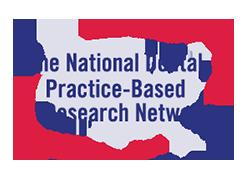When most of us hear the word ‘research’ we often think of labs, test tubes, and Petri dishes. While this type of research provides countless benefits and medical breakthroughs, it’s not the only way to answer some of medicine’s and dentistry’s questions and gain invaluable knowledge. And sometimes, the answers we get from lab research cannot be easily transferred to the everyday clinical setting. This is where practice based research comes in, to help provide some of those answers.
Different from laboratory research, practice based research aims to find solutions to a problem or situation by looking at treatment outcomes within a clinical practice, such as a dental office. The research is carried out by the practitioners in the office, like your dentist, assistant or hygienist. (1). Dental clinics serve as a ‘natural lab’, where data can be gathered in a “real-world” setting. Participating in this type of research has been shown to advance dental care by improving the quality of care, treatment of symptoms and identifying and preventing diseases. (2).
 Here at Nicollet Mall Dental Arts Dr. Uppgaard and I are members of the National Dental Practice Based Research Network (NDPBRN). The name of the organization says it all, It is a practice based research network and its members span the United States. It is overseen and funded by the National Institute of Health. You may have noticed that we have been involved in several practice based studies. These include the Cracked Tooth Study, Risk of Oral Cancer Screening (ROCS), and most recently, Management of Painful Temporomandibular Disorders. You may have even been a participant of one, thank you!
Here at Nicollet Mall Dental Arts Dr. Uppgaard and I are members of the National Dental Practice Based Research Network (NDPBRN). The name of the organization says it all, It is a practice based research network and its members span the United States. It is overseen and funded by the National Institute of Health. You may have noticed that we have been involved in several practice based studies. These include the Cracked Tooth Study, Risk of Oral Cancer Screening (ROCS), and most recently, Management of Painful Temporomandibular Disorders. You may have even been a participant of one, thank you!
Recently, Dr. Uppgaard and I went to Chicago for a regional meeting with the NDPBRN. It was a great opportunity for us to meet with colleagues, participate in discussions, and learn about the results of some recent studies that have been completed. One study we found especially interesting was the Management of Dentinal Hypersensitivity.
Dentinal hypersensitivity (DH) is a painful response of a tooth, or teeth, to an environmental stimuli such as sweets, heat, cold, or the touch of a metal instrument. After ruling out more serious conditions like caries, trauma, or cracked teeth dental hypersensitivity is a common problem, one we often see in our office. (3) The presentation of symptoms vary from patient to patient. It can occur in single episodes or chronically, and can be localized to one or two teeth, or more widespread. (4) The most common cause of DH is toothbrush abrasion (brushing too hard). Almost daily, we see patients with this type of sensitivity. It may appear as a dark color above the enamel at gum line and cause a twinge of pain after ingesting something sweet, hot or cold, or when our metal instruments touch the area. (4)
The study focused on how dentists diagnose DH and what treatment recommendations are most widely made. Most dentists believe gum recession is the most common predisposing factor to dentinal hypersensitivity. This was followed by abrasion (brushing too hard), erosion, attrition/abfraction lesions (wear on teeth), and lastly, bruxism (clenching). The results indicated that 99% dentists who participated in the study use multiple methods to diagnose DH. These include patients reported symptoms after excluding other causes through clinical examination(48%), blowing air on the area of sensitivity (26%), and applying cold water (12%). (5).
The study also concluded that the most common recommended products for treatment of DH is OTC sensitive toothpastes (55%). Next were fluoride products like rinses, toothpastes, or varnishes (41%). Lastly was a glutaraldehyde/HEMA treatment (3%).
To read the full study, click here.
At Nicollet Mall Dental Arts, Dr. Uppgaard and his hygienists use current research and a combination of diagnostic methods to diagnose and treat DH. If you’re experiencing similar symptoms, ask Dr. Uppgaard or your hygienist at your next preventive visit. While you’re at it be sure to ask us about the current research we’re doing and how you can get involved!
Keeley Flavin, BSDH
Sources Referenced:
- https://www.creativityandcognition.com/resources/PBR%20Guide-1.1-2006.pdf
- https://www.ahrq.gov/research/findings/factsheets/primary/pbrn/index.html
- Cummins D. Dentin hypersensitivity: from diagnosis to a breakthrough therapy for everyday sensitivity relief. J Clin Dent. 2009;20(1):1-9.
- Gillam D, Chesters R, Attrill D, Brunton P, Slater M, Strand P, Whelton H, Bartlett D. Dentine hypersensitivity--guidelines for the management of a common oral health problem. Dent Update. 2013 Sep;40(7):514-6, 518-20, 523-4.
- http://nationaldentalpbrn.org/tyfoon/site/fckeditor/AADR_abstract_MDH_DDS_questionnaire%20v%200%204.pdf
